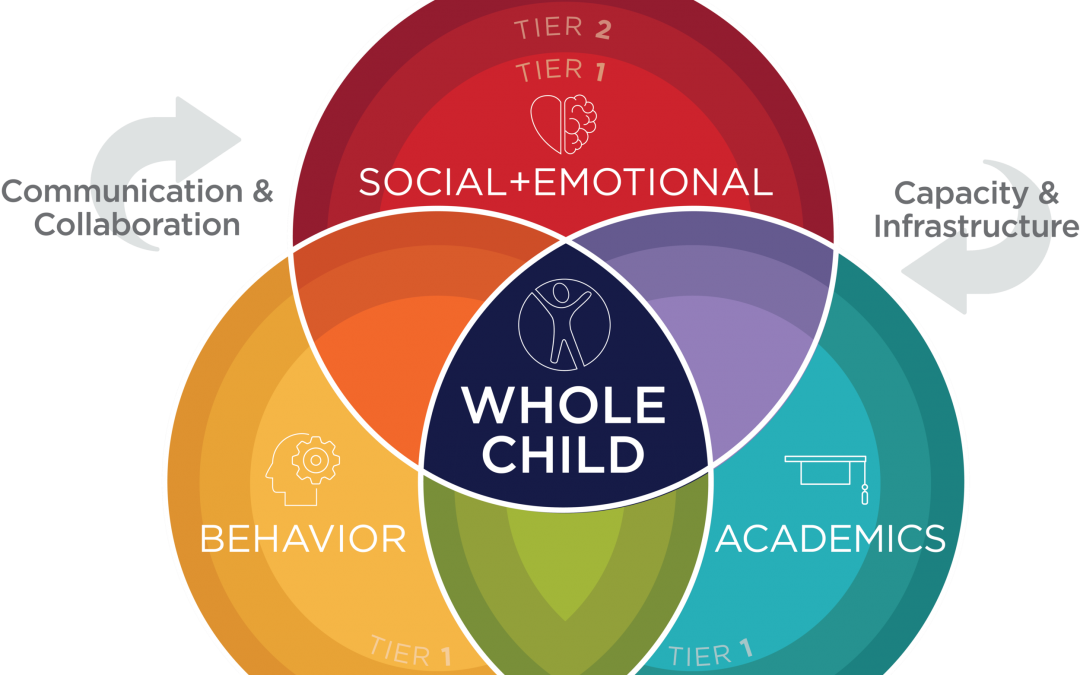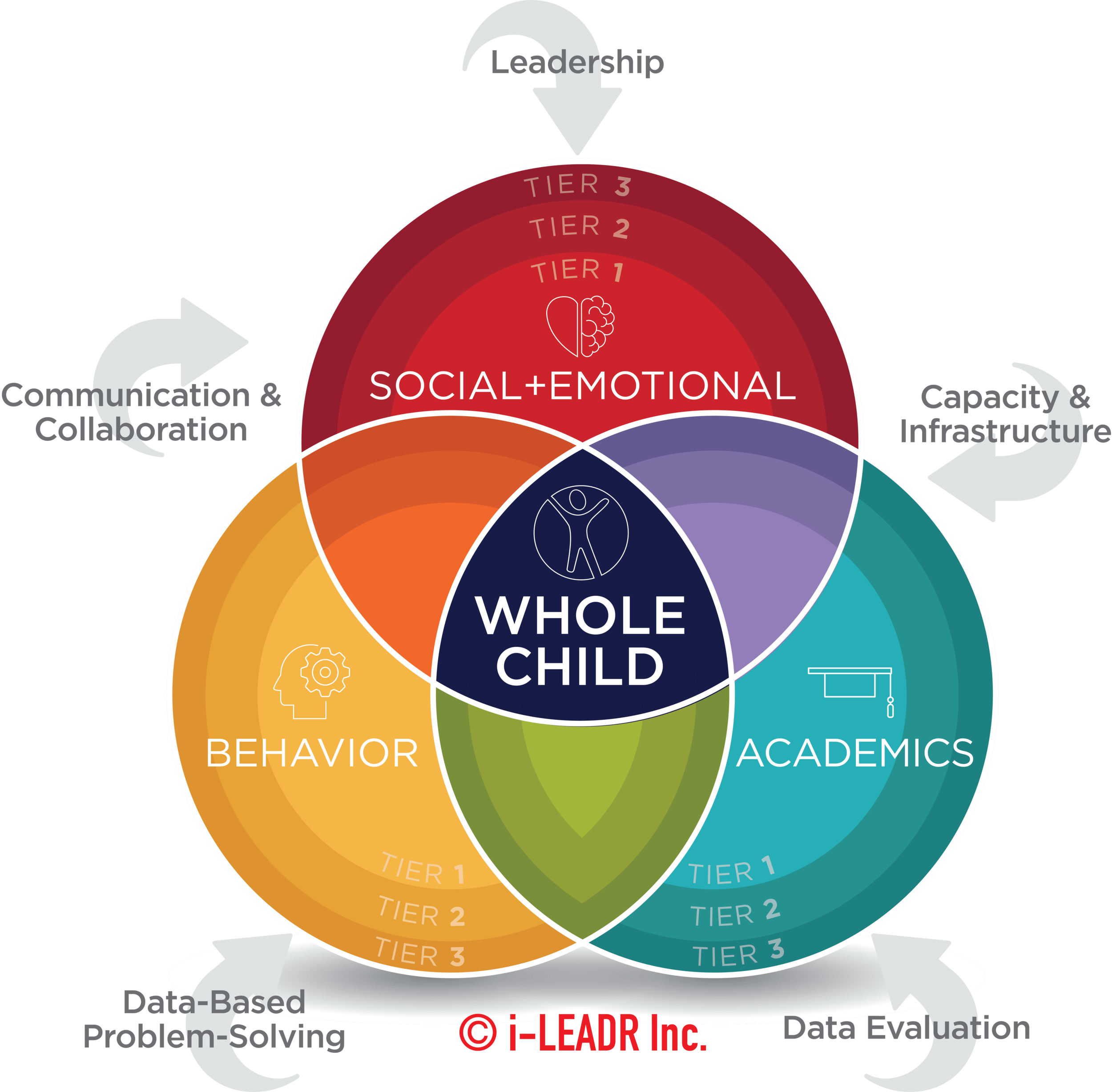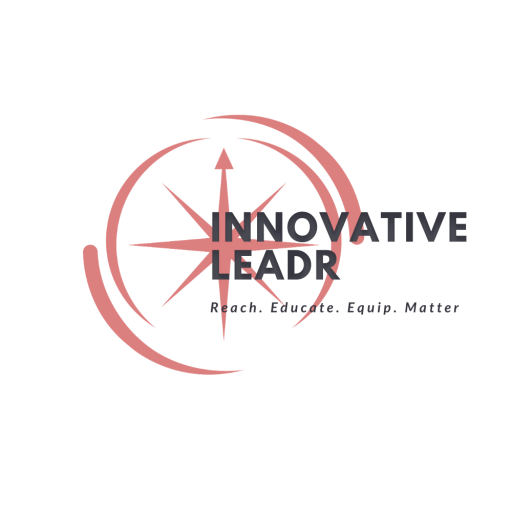
Feb 12, 2020 | Behavior, Data, Instruction, Leadership, Mindset, MTSS & RtI, PLCs
What is MTSS? – The implantation of raising student achievement in the classroom. How teachers, schools and educators can use leadership, data, communication and collaboration to improve student performance.
By: Janna Sells
Are you sick of feeling the MTSS implementation burnout? Has MTSS become a four letter word where you serve? Tired of the theory not matching practice? We were too. Welcome to our roadshow. A group of educators who were charged with the job of making MTSS work to close gaps and raise student achievement. In our journey we’ve uncovered the tools needed to build an effective 3 Tiered Model. Let us start off by first saying, it was not easy. We made tons of mistakes, but we eventually got it right. We continued and will continue to lean into our own learning and improve what we know to be faithful and true about implementing this highly effective total school improvement model.
5 Critical Components of MTSS
There are 5 critical components, or pillars, that have to be carefully and thoughtfully crafted prior to implementation of MTSS. Without these 5 essential inputs, an MTSS model is simply impossible.
1) It all begins with LEADERSHIP |
Leadership knowledge and reinforcement are the driving force behind a strong implementation model. What does that mean?
- Leaders equip themselves with the knowledge they need to lead teachers through implementation
- Leaders LEAD MTSS PLCs – know the data, lead the discussion, and equip teachers
- Leaders help align the arrows between the work teachers are doing in PLCs to their School Improvement Plan
- Leaders are active problem-solvers and strong advocates who support teachers so they may best serve students
2) Clear and consistent COMMUNICATION & COLLABORATION |
More times than we are excited to admit, we’ve coached and supported sites with the best implementation intentions, but they failed because of the lack of clear communication. The same factor for the leading cause of divorce in the United States is killing MTSS implementation across our country. Why do we continue to ignore the impact of good communication? Likely, because it is an art. Knowing when and how to say the right things can make or break the culture around implementation. It’s equally important that you bring teacher leaders in with you as you build your MTSS model. Their boots on the ground feedback is immeasurable and will help you stay ahead of potential threats.
3) Capacity and Infrastructure build sustainability |
Invest in your people. Not programs. Work to build capacity in ALL of your staff to create a model that lasts.
- Invest and equip all the people in your building to help them see the strong role they play in the MTSS model.
- It’s an all hands on deck approach. Every person in your building should see how their role impacts and aligns the arrows towards total school improvement.
4) Data-based problem-solving |
We would never expect a doctor to begin writing a treatment plan for an ill patient without data based indicators suggesting the treatment is exactly what the patient needs. We would also expect that the doctor has a strong line of research to support the treatment plan he or she chooses to help the patient recover. The same is true for educators. To teach without using a data-based, problem solving protocol is malpractice.
5) Data Evaluation drives continuous improvement |
Life is a constant cycle of continuous improvement. We evaluate success in many different measurements, but nonetheless, we drive towards improvement. MTSS implementation is no different.
- There are many tactical tools to measure whether or not your implementation model is having a positive, negative, or neutral impact on students’ growth and achievement.
- It’s important that you triangulate your implementation data to get a true measure of impact.
- You must listen to your current indicators and humbly reflect and improve on them until your desired implementation is achieved.
- Remember, this a marathon, not a sprint. Be present. Be strategic. Be consistent.
A Three-Tiered Approach to Academics, Behavior, and Social Emotional Supports
i-LEADR, Inc. coaches a three-part, three-tiered model (see image above). We believe in order to truly serve the whole child, educators must systematically measure the effectiveness of tier 1 core supports in all three areas: academics, behavior, and social emotional. There should be strategic core plans in place that identify grade or school-wide deficits in these major areas with a strategic improvement plan.
Once the school begins acting on core areas of concern, they should start to identify students outside and perhaps within those areas who need strategic tier 2 and/or intensive tier 3 supports. Intervention plans should be written to address the needs of these students and document support services provided. Educators should measure the impact of students’ response to instruction by using frequent progress monitoring.
The life blood of this model – Professional Learning Communities. None of this work should be done in isolation by a single teacher. These conversations, data-analyses, and service planning should be done inside a strong professional learning community model. These PLCs should be facilitated by a strong leadership team and should be communicated through School Improvement Team work. A comprehensive model, but not impossible.
Just remember, tradition does not make best practice when it stops being best for kids. Change is hard. Failure is unavoidable. How you rise from your failed attempts will determine the impact and effectiveness of your leadership. It’s ok to ask for help when help is needed.
To learn more about how i-LEADR coaches and supports MTSS implementation visit us at: https://ileadr.com/service/
Feb 26, 2017 | Instruction, PLCs
Core Instruction Techniques for Schools, Students, Teachers & Educators
Core is Key: 4 Reasons Why
If you’re working on being more fit, you know that core strength is really important. Core strength leads to balance, stability, and good posture (no slouching). It’s also key to many everyday activities that we do (bending, reaching, standing, sitting…) and often do without thinking. If core muscles are weak, we lose balance and stability, we slouch, and we have pain that could have been prevented. When we’re talking about classroom instruction, it holds the same importance. Here’s why:
Expectations Become Clear
Just as starting any fitness program, we always have an end in mind. We decide what is important to reach our goals: what and how much we should eat, what type of exercise we should do and how often we should do it, etc. Defining your expectations for core instruction is just as important. It provides the road map for everyone to follow and gives you the accountability tool to ensure that it happens.
Balanced Instruction & Intervention Prevention
Just as strengthening your core muscles increases your balance, strong core instruction helps you clearly see which students are struggling so that you don’t spend more time on intervention than you do on core instruction. If core instruction isn’t solid, you’re going to see a lot of gaps in student data. These gaps could be misconstrued as learning deficits for students when they are really gaps in curriculum & instruction. Deficits for students = a plan for intervention to fill those gaps. If core instruction is strong, you can trust that you truly need to do something different for those students who are struggling.
Increase Stability
Strengthening your core muscles prevents aches, pains, and unnecessary injuries in other areas. In the same way, good first teaching for all ensures that you can trust that students are getting the same quality instruction across all classrooms in your building. You avoid having to place students strategically in certain classes to avoid exposing them to poor teaching. Team collaboration and a schedule that values their common planning is key to making this happen. When teachers are able to plan core instruction as a group around the same set of standards and instructional expectations, effective practice spreads and all teachers are better equipped.
Better long term outcomes
In the end, if you:
- clearly define core expectations and monitor to insure that they happen
- provide time for teachers to plan together how to insure those expectations happen in every classroom
- use the data along the way to determine improvements that need to be made
better outcomes are guaranteed for EVERY student!
Strengthening your core, whether we’re referring to muscles or instruction, is the foundation we must build on in order to become more “fit”, either health-wise or instructionally. Ignoring it will just lead to more problems. Attending to it will help you focus your time and attention to continuous improvement in areas that truly need it. Core is key!

Dec 29, 2016 | Data, PLCs
Student Data-Based Decisions for Teachers, Educators & Schools
In schools today, making data-based decisions on students’ progress {both academic and behavior} is a NON-NEGOTIABLE if we want struggling students to show growth. Fortunately, in many cases {not all}, having the data is not the issue. Many times, teachers are actually ‘data drunk’. They have so much data on a student, but no idea how to use it to drive instruction. The idea of using data driven decision making at the student level is actually quite easy, once you’ve mastered the art of effective data PLCs (Professional Learning Communities). So, what do you need to know?
GROWING THE WHOLE CHILD
In my coaching sessions with teachers around data, I always allow them to reflect by asking the following questions. After all, they are the ones who have all the data and know the children best. These questions are designed for them to leave knowing how to problem solve using data, but without me. “Give a man a fish and he’ll eat for a day. Teach a man to fish and he’ll eat for a lifetime.” Effective coaches build sustainability.
Questions…
What data are you using to determine the effectiveness of your core?
I am a firm believer that without sound core instruction, total improvement cannot be made. It’s the never ending exhaustion of the intervention treadmill. This is true for both behavior and academics. You cannot look at the growing the whole child until both are carefully considered. There are several data points teachers use to determine the effectiveness of core. For academics, we first look at our state assessment data. We examine students’ proficiency and then we follow up with their growth using EVAAS and district adequate growth charts. When you work in a school with an upside down triangle (meaning that the majority of your students are not proficient in a subject area), it’s likely that core instruction is not where it needs to be. Once you see at least 80% of your students growing, you’ve found some effective strategies that work! Because it’s best practice to use multiple data points to tell a story we use several other pieces of data as well. We use universal screening data, district assessments, as well as common formative PLC assessments. None of these data points will be effective unless they are analyzed authentically. This is really difficult if the culture of your school is not a growth mindset. That’s another topic we will dig into later! When we are looking at our core behavior models we use ODR (office discipline referrals), attendance, and graduation rate as our core growth measures. Any time you are measuring your core, you need to make sure you are using clean data. This requires lots of training and consistency within your building and across the district.
What students are not performing adequately providing only core instruction?
Which students are struggling to maintain adequate performance without any supplemental support? These are the students who need to be involved in an intervention system, whether it’s standard protocol or strategically targeted and designed. Maybe the students have off grade level deficits that need to be addressed, or it could be there are instructional deficits that occurred because a child has moved or missed a critical component of core instruction. Whatever the reason, these students need a little more than core instruction. How much more, is yet to be determined. Using intervention progress monitoring data is not difficult, but sometimes can be tricky. To avoid the trickery, remember these things:
- your progress monitoring tool should be aligned to the intervention being provided
- depending on the intensity, intervention progress monitoring should occur more frequently than core
- intervention progress monitoring should reflect adequate growth, not proficiency
The reason we progress monitor interventions is to ensure the supplemental instruction for both academics and/or behavior is actually working for that student. Far too often, I have seen children in a specific intervention not monitored frequently enough. A child might receive 3 weeks of instruction and then be progress monitored, only for the teacher to realize that instruction wasn’t working. It’s such a disservice to the child and wastes critical hours of instruction that we can use to turn the learning trajectories for these students.
What strategies work best for the students I’ve identified as needing supplemental instruction?
Once the easy part of using data to determine who is at need is completed, the hard part of determining what interventions work best for this subgroup and how to implement comes in to play. The PLC component is critical here. Since we are all stronger as a team it makes sense to make data driven decisions as a team. Targeting and aligning interventions is an art. There is no, “one size fits all hat” that provides for the needs of all students. We must look at every individual student with a team approach armed with knowledge of foundational reading and math strategies and with a strong understanding of behavior science. See, in order to address the whole child, you need a data driven team.
EFFECTIVE DATA PLCs
Because growing the whole child is an intricate art, it’s imperative that schools build effective data PLCs. These PLC teams should be composed of several critical MTSS (Multi-tiered System of Support) lifelines, including, but not limited to: general education teachers, leadership, counselors, special education teachers, gifted and talented representatives, and English as a second language teachers. Every category previously mentioned brings a different knowledge base to the table. Using a laser focus approach on every individual child’s need, this team can best determine what will enhance growth. We cannot continue to expect kids to grow until we collaboratively problem solve based on data. It’s just not possible on a large scale.
There are three ‘big rocks’ when creating a systematic data driven process. First, a leveled data system to monitor both core instruction and intervention data must be available and used to fidelity. Second, data driven decisions must be made as a team and not by one individual. Last, data teams should be composed of a robust group with different skill sets that address both academics and behavior.

Nov 2, 2016 | PLCs
Effective PLCs for schools, teachers and educators
No teacher enters the field without the best intentions to serve students, grow them, and help them to be successful. The demands on teachers in the classroom today are far different than they used to be, so being able to rely on one’s team is more important than ever. Professional Learning Communities, or PLCs, can change the culture in a school and lead to both student and teacher growth. How?
Effective PLCs can…
- Make all of us better through the sharing of practices & shared accountability
- Ease the work load for everyone
- Share the expertise of all teachers when problem solving for students
- Change school culture
How do you get your school there?
#1 – Make it possible and show up! When leaders create the structure for teams to meet collaboratively on a regular basis, it sets the tone that this is a priority. When leaders attend and contribute in those PLCs, teachers feel that the work they do during that time is valued. Hold teachers accountable for showing up and being part of the work.
#2 – Create common mission, commitments/norms, & goals! In order for any group’s work to be effective, we all need to be “rowing” in the same direction. Agree on the common purpose for the group’s work, what goals we want to achieve together, and what we will all commit to in order to make it happen.
#3 – Use an agenda to keep “the main thing, the main thing”! It doesn’t have to be beautiful and full of “educationese” but just needs to keep the work and conversations on track. Document time to share celebrations, talk about data, create action plans around the data, problem solve around students, etc. This is not the time to spend 30 min. talking about the next field trip or what theme we want on the bulletin board in the hall. Discussions can follow these 5 simple questions (credit to DuFour, DuFour, Eaker, & Many; Iredell-Statesville Schools, NC):
- What do students need to learn? (focus on standards)
- How will they learn it? (focus on strategies & common planning)
- How will we know if they’ve learned it? (focus on formative assessment)
- What will we do if they don’t learn it? (focus on intervention)
- What will we do if they already know it? (focus on challenge and enrichment)
#4 – Don’t give up when you hit bumps in the road! And they will come. Lots of them. Every team will have a different personality. Leaders will emerge and so will those who want to go against the grain. Struggle creates forward movement. Address it, embrace it, and watch it grow your teams.
I was that resistant teacher who really didn’t see the need for PLCs. I didn’t trust that my colleagues had anything worth sharing that I hadn’t already tried. You know what? I was so wrong. Becoming a part of an effective PLC team caused more growth in me than I ever imagined. And what happened next? You guessed it! My students grew too! Suddenly I wasn’t alone in the hard work anymore. I had others carrying the load with me. Effective PLC teams are worth working for. Your kids deserve it!






